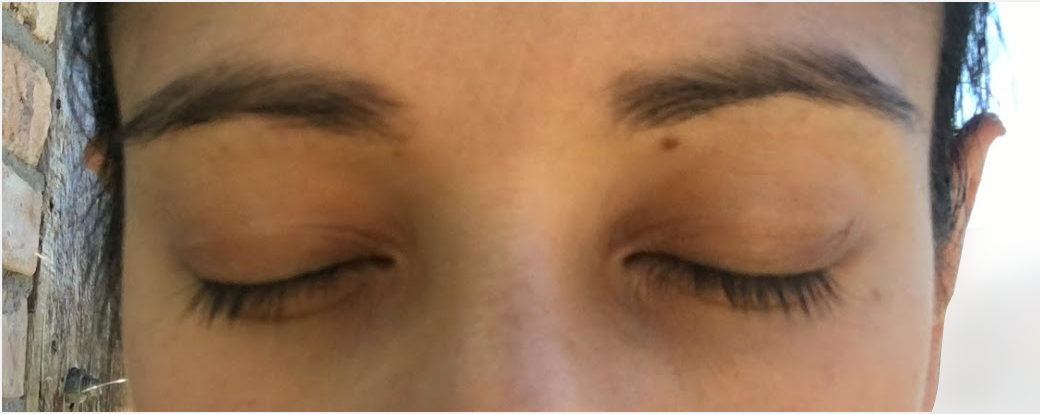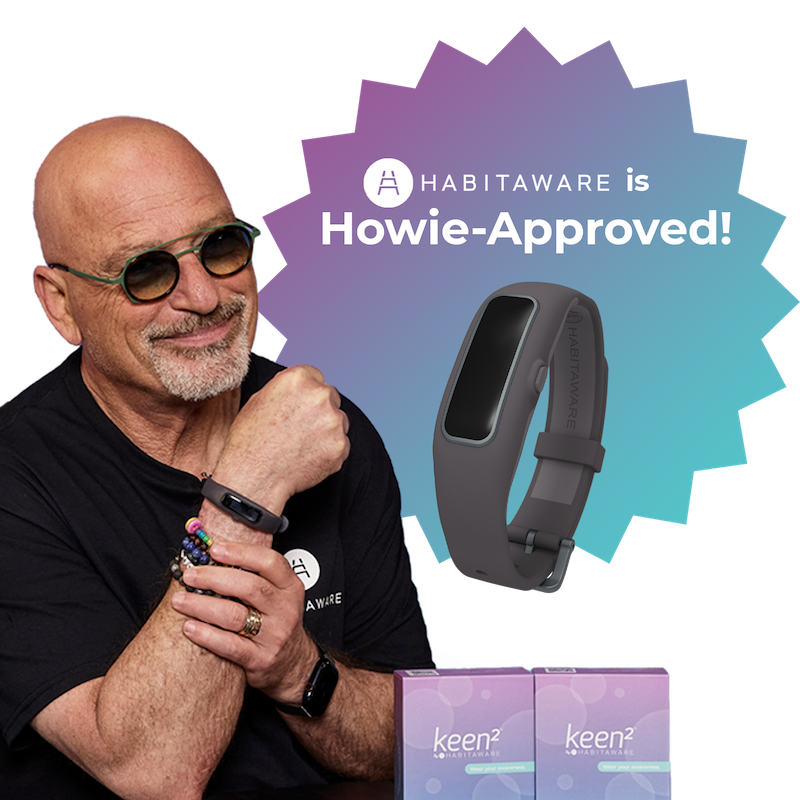It’s week 4 of Our Month of Gratitude, here’s why I’m grateful for TLC Foundation for BFRBs.
TLC has been there for me in so many ways, and I know they will be there for you.
- I thank TLC for educating me – not just on the scientific aspects of bfrbs, but also in making me aware that I was not alone.
- I thank TLC for leading scientific research to study and better understand these disorders.
- I thank TLC for training professionals and maintaining a listing of therapists who specialize in trichotillomania, dermatillomania and other body focused repetitive behaviors.
- I thank TLC for supporting support group leaders around the world.
- I thank TLC for welcoming HabitAware to our first conference as exhibitors so that we could confirm our smart bracelet idea was something trichsters like me even wanted.
- I thank TLC for welcoming me into their family, after nearly two decades of not knowing where I belonged.
***
For most of my life I let my BFRB stop me.
BFRB stands for Body Focused Repetitive Behavior. BFRB is the umbrella term for a group of psychological disorders that stem from stress and anxiety. These disorders include hair pulling (trichotillomania), skin picking (dermatillomania), nail biting (onychophagia), cheek biting, nose picking and a host of other behaviors in which the hand repeats an action on the body without the person having full control over the movement. In short these are subconscious movements with detrimental results. Think bald patches, skin lesions, bloody cuticles, infections and more.
What do these physical manifestations do to a person with BFRBs? Well, quite simply, make us feel like sh*t. How do I know this? Because for 20+ years I have suffered from trichotillomania, pulling out the hair from my eyebrows and eyelashes, and feeling oh so inferior because of it.
According to the American Association for Marriage and Family Therapy (2009), “BFRBs are among the most poorly understood, misdiagnosed, and undertreated groups of disorders.”
This is despite the fact that 1 in 25 Americans is affected by a BFRB!
How can it be that even though SO MANY people have a BFRB (nearly 30 Million in the US) it’s not widely known?
One word. SHAME.
And it’s a damn shame. A damn shame that we who pull, pick, or bite, feel so guilty for doing this to ourselves.
“It is not a choice. We are chosen.”
But the truth is: IT IS NOT A CHOICE. In the same way no one chooses to get diabetes or parkinson’s disease, I have not consciously chosen to pull out my hair. It is something that happens at a subconscious level as a soothing, or coping, mechanism. It’s my “fight or flight” system gone awry.
Because there is a perception that we are doing it to ourselves, we are judged for it. To protect ourselves, people in the BFRB community do so in silence, in hiding, in defeat. We let our BFRB make choices for us, stopping us from what we really want to do.
For most of my life, I let my BFRB stop me.
But no more.
Today, I give thanks to TLC BFRB for their role in my trichotillomania treatment and getting me to a point where I can boldly declare, my BFRB won’t stop me..
TLC Told Me I Have Trichotillomania
I started pulling my hair as a tween. In an elementary school science class, we were taught about microorganisms living in our eyebrows and eyelashes. I can still picture the video in my mind’s eye. It grossed me out and made me self-conscious of the area. Around the same time, my family moved to a new town. I felt out of place and the kids constantly reminded me of it. They felt I wasn’t good enough and, as a child, I began to believe it too. A few years later, my dad got sick with cancer and wham!, hair pulling became my number one coping skill.
It wasn’t until my late twenties, sitting in my office one day, staring into a bright blue sky with just a few white fluffy clouds & crying because I had spent the morning pulling out lashes right there at my desk. I was going through a hard time. A quarter-life crisis, coupled with a heartbreak.
I Googled, “why do I pull out my hair?” And I found links to TLC Foundation for Body Focused Repetitive Behaviors (Formerly known as the Trichotillomania Learning Center), one of the only American non-profits dedicated to the BFRB community.
TLC Was My Help For Trichotillomania
That day, sitting in the empty office, I clicked the TLC link and found an immediate comfort in finally learning that I WAS NOT ALONE, as well as learning that this “thing” I was doing to myself was actually a mental health disorder & not really me!
TLC BFRB defined my condition and explained it as well, helping me find the answer to my blazing question, “What is trichotillomania?” (Actually, it was more like, “Trichotilillomania? What the &%#$% is trichotillomania!?”
Then I Googled “how do I stop trichotillomania?” and again was directed to TLC.
Though I found comfort in finally knowing, I continued to hide my eyelash pulling from everyone close to me with makeup and fake smiles. I just didn’t think others would understand. Over the next few years my eyelash pulling ebbed and flowed, matching my states of stress and anxiety.
And over those next few years, I tried solutions for my constant hair pulling that I found through TLC’s website.
Trying Psychological Treatment For Trichotillomania

TLC is a huge proponent for therapy, and educates treatment professionals interested in helping people with BFRBs. Because of TLC’s advocacy for psychological treatment, I decided to see a therapist shortly after I learned of my condition.
But the therapist I chose was not one of those who had been trained by TLC.
“Why don’t you just stop pulling out your hair?” she asked.
“Wow! Why didn’t I think of that?! Just stop hair pulling! Duh! Thanks, I’m cured! Not.”
UGH. Sigh.
The lack of understanding from someone who was supposed to “cure” me made me give up on therapy as an option, at least for a while.
Pills and Hypnosis: Two Ways to Stop Pulling Hair, Maybe?
One member of TLC’s Scientific Advisory Board, Dr. John Grant, conducted research about an amino acid, showing that it had some success in reducing BFRB-urges. So, I tried it. I personally wasn’t able to notice a difference, but because everyone’s body chemistry and BFRB are different, I wouldn’t discount it as an option!
I also tried hypnotherapy. My boss at the time was using hypnosis try to quit smoking. I thought maybe it could work for “hair plucking,” as the hypnotist wrote on the intake form.
That should have been a sign. I lied to my boss and made up an excuse to get the hypnotist’s contact information. I saved up and paid cash for each of my four appointments, because I still felt like I needed to hide that I was getting help in this way.
That lack of confidence should have been enough to tell me what those $800 were going to get me: NOTHING. Well, actually I did get something: more hair in my hands.
Looking back I realize I wasn’t in the right state of mind for it to work. I was too stressed to be hypnotized. My mind was never quiet enough and had its own internal dialogue, second-guessing the efficacy of hypnosis while actually trying to get hypnotized!

Life happened and I got in a groove of pulling and being best friends with a black eyeliner pencil.
Throughout all of this, the TLC team was there with me, even though they didn’t know it. I subscribe to their emails and received their monthly letter. I learned more about body focused repetitive behaviors, their relationship to other mental health issues like depression, anxiety and OCD, and all their research work.
From Hiding Hair Pulling to Sharing My Secret
A few years ago, as I was getting ready for work, I wasn’t fast enough. My husband, Sameer, saw me before I got my eyeliner on. And he looked at me and said “Whoa!? What’s going on with your eyebrows?”
My eyes went wide like a deer in headlights. And I said, “Uh. You caught me.” I went silent for what seemed like hours, because I had no idea what to say. “Oh, I pull out my hair,” just didn’t seem like the right response to his question.
Luckily I had found resources on TLC’s website for loved ones. I finally came clean and over the next few weeks I opened up to Sameer and he did his own research on, ta-da, the TLC website!
He encouraged me to see a treatment professional. So I tried again, this time using TLC’s Listing of Trained Treatment Professionals to see someone well-versed in trichotillomania. I found therapy to be really helping for treating trichotillomania, as well as my other “baggage.”
TLC also has a listing of local support groups and I joined the one where I live. Those personal connections were the start to building my BFRB community and starting on the path to recovery for trichotillomania.
One evening, as we sat on the couch watching tv, me pulling away subconsciously, Sameer’s hand slowly took mine. And I turned to him and said, “I wish I just had something that notified me…that wasn’t you.”
We couldn’t find anything like it online, so we brainstormed ways to build it.
TLC’s Inadvertent Role in Creating our Awareness Bracelet For Trichotillomania
Through TLC’s website, Sameer & I connected with experts in field. All the TLC Scientific Advisory Board doctors we spoke with, from Dr. Penzel to Dr. Reinardy, were generous with their time and knowledge.
We found we even had a local connection! Dr. Novak, a founding member of TLC’s Scientific Advisory Board, was excited about our idea and joined The HabitAware Professional Advisory Board.
Building the Keen Smart Bracelet and How Keen Works

We continued to develop our smart bracelet with our friends, John & Kirk, ultimately naming it Keen because the goal of our habit tracker bracelet is to help develop “keen” awareness of where your hands are.

When this silly-looking prototype worked for me, we were so motivated to make it better – and real – for others! Keen works by comparing the trained gesture to actual hand movements and delivering a vibration when it senses a mathematical match. This vibration is like a wake-up call, helping shift the behavior from the subconscious to the conscious mind so you can affect positive change in your life.
We tested revised prototypes with friends from the support group I found through TLC and friends in our Minneapolis tech and advertising community, who confided interest in our smart bracelet to help them with their hair pulling, nail biting or skin picking. We set them up with an app that connected to the bracelet and they trained it for their specific hand gesture.
It was the first thing ever to actually help me take control of my hair pulling, even cooler, it began to work for our small crew of testers!

But, we needed more than our friends to give the OK. We needed the help and input of the TLC community. So we went to TLC and asked them if we could attend their conference. We were welcomed with open arms & excitement as we showed initial prototypes to conference attendees. There was so much love and support, and I knew my family grew that weekend.
This “Inner Circle” followed us on our journey to China to participate in HAX Hardware Accelerator program and gave our team input on features, colors and more as we continued our development. Some were also able to beta test with us and they were the first to receive their Keens when we began shipping in March.
< See what others say: HabitAware Keen smart bracelet reviews >
Professionally, Keen by HabitAware would not exist if not for the TLC Board Members who initially coached us AND the TLC community who expressed excitement and interest. This community is the reason we gave up our day jobs to push Keen forward.
Personally, TLC has been a huge part of my recovery and I am forever grateful. It is why HabitAware gives thanks and gives back. We strive to host and participate in events that allow us to raise donations and awareness of BFRBs:
- As part of our pre-order campaign launch in 2016, we pledged a percentage of our pre-orders
- In early 2017, I spoke at MPLSMadWomen. Here, I shared information about trichotillomania and why I left my job in advertising to become an entrepreneur.
- In Oct 2017, as part of Twin Cities Startup Week, I spoke on a panel about Mental Healthiness & Startup / Tech Culture.
- Also in Oct 2017, I pitched our company at HealthcareMN & ImpactHub’s joint competition, Change [Health]. We were selected among 10 other awe-inspiring startups as the winner and the prize money was donated to TLC.
Just as the BFRB community supported us in our official launch of Keen this March, we will continue to support the TLC BFRB organization in their efforts to teach, support and fundraise for us.
“Without TLC BFRB we would all still be so very alone.”
My BFRB no longer stops me and with TLC Foundation for BFRBs by your side, I guarantee that your BFRB can’t stop you either.
Thank you TLC for filling my world with strength and hope.
with love & awareness,
Aneela



